regional order forms
注文用紙
|
¥
|

|
€
|

|
$
|

ultra-red ode to johnny rio
ジョニー・リオの為の頌詩 (1998)
|
Ultra-red: Ode to Johnny Rio | 12" Vinyl EP | Released 1998 | C.005

| |
Comatonse.005
A1. Auto Body
A2. Cruise Control
B1. Cruise Control (Griffith Park Jam)
remixed by Local 303
B2. Cruise Control (Ultra-session)
remixed by Chugga
All tracks produced by Ultra-red and engineered by Red Leader except B2, remixed by Chugga.
|
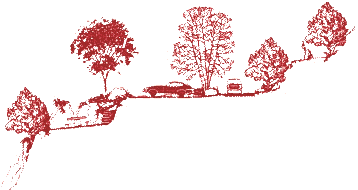
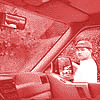 |
1 Ultra-red's first release for Comatonse Recordings, Ode to Johnny Rio expands on ideas initially pursued in their remixes for Terre Thaemlitz' "Still Life with Numerical Analysis" (Mille Plateaux). This twelve inch vinyl release finds Ultra-red once again evoking John Rechy's 1967 novel, Numbers. Written in the first person, Numbers tells the story of a former hustler, Johnny Rio, who returns to Los Angeles to reconcile his past. Rio begins his tour of Los Angeles by visiting his old downtown haunts. From there, he eventually makes his way to the sexual playgrounds of Griffith Park.
|
|
2 With metaphors of immersion, consumption and suffocation, Numbers follows Rio's growing preoccupation with cruising for sex. Whereas anonymous sex once earned income for Rio such liaisons now provide another compensation. Bodies become fragments, currency in an economy of public sex. An economy whose object appears to be nothing more than accumulation (hence the Numbers Rio assigns to each encounter). Driving his car along the roads which crisscross the 3000 acres of Griffith Park, Rio experiences cruising as a profound negation of the self, instead of a liberation of queer sexuality launched into the public realm.
|
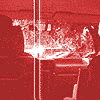 |
 |
3 Ultra-red's Ode to Johnny Rio attends to the echoes of Rechy's representation while rejecting its existential despair for a materialist approach to queer space. Likewise, Ultra-red denounces the current definition of queer politics as market empowerment. Taking the form of installations, performances, organizing campaigns and field research, our work investigates the nature of the recent "sex panic" debates within the queer media. Debates that have been characterized as a clash between libertarian sexual radicalism and bourgeois propriety.
|
|
4 The tracks "Cruise Control" and "Auto Body" explore the over-determination of property, in not only public sex practices, here specific to Griffith Park, but in the very terms of the controversy surrounding gay public sex. These recordings suggest that the car serves as a fetish, displacing social antagonisms for symbols of pleasure easily identified within an all-consuming market. In the public sex rituals of Griffith Park, going back as early as those explored in Rechy's novel, the automobile remains the vehicle transmitting pleasure as desire, and desire as object. Significantly, for this transmission to be successful, it must also be presumed, habitual, second nature.
|
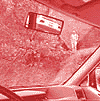 |
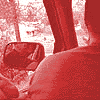 |
5 Yet, in all the arguments either celebrating or vilifying park sex, property -- the automobile and the land it navigates -- remains transparent. Critics never bother to ask by what means do cruisers transport themselves to Griffith Park. Nor do critics inquire into the class composition of the public in whose trust public space is policed. But how does one examine the value of eroticized difference without also observing the vagaries of class? It's a risky omission particularly given the importance of status in the rituals of seduction. After all, distinctions between auto bodies occupies a central role (inclusive of role playing) for those who cruise. |
|
6 However, for many, suggesting that the cruiser is marked by class transgresses the codes of public sex. It is in the very nature of public space in our late-model capitalist society that spaces like Griffith Park hold out the promise of erasing all vestiges of class antagonism. Queers are not only subject to this sort of utopianism but adhere to it all the while employing the signs of class interest for sexual contest. Why else would the model of one's car, the bass of one's sound-system and the traffic in rainbow stickers matter? |
 |
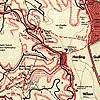 |
7 Thirty years ago, Rechy's Johnny Rio drove these same parkways listening to the "electronic murmuring" of the radio. Odes to radical desire like "Wild Thing" and "Satisfaction" "act[ed] as a catalyst for Johnny's buried despair." Beginning by cruising Griffith Park with a microphone, Ultra-red's Ode to Johnny Rio records the chorus of birds and crickets accompanied by the din of passing cars, the shuffle of footsteps and the low-level drone of the urban machine outside the garden. Ultra-red's manipulation of this soundscape catalyzes a critique of cruising as controlled by the political economy of public space. |
Coming soon:
La Dérive Homosexuelle. |
| |
|
Ode to Johnny Rio is the first part of Ultra-red's Second Nature series.
Cover illustrations from Griffith Park Master Plan, Los Angeles Department of Park and Recreation, 1968. Photographs from the Ultra-red video Cruise Control, 1998. | |
|









